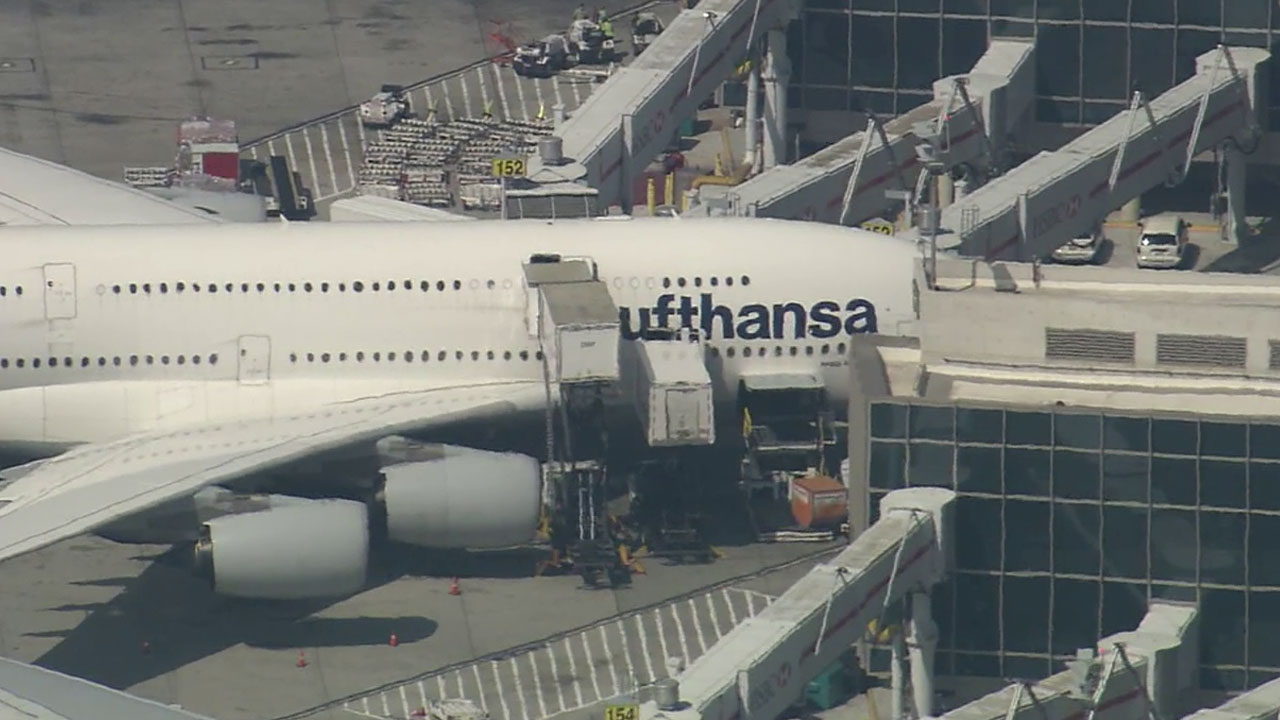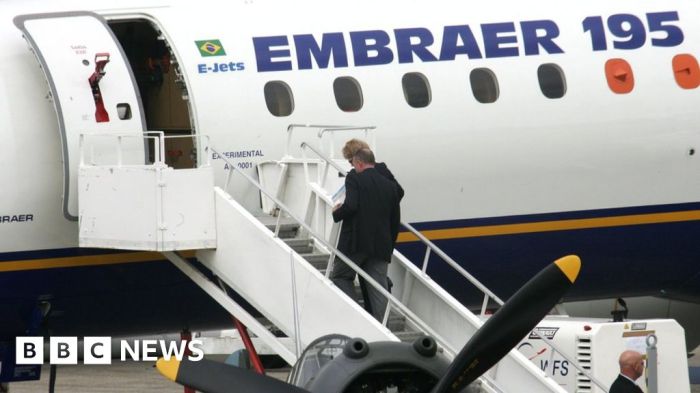Lufthansa jet and drone in close call – a chilling scenario that underscores the growing concern of airspace safety in the era of unmanned aerial vehicles. This incident, which involved a Lufthansa aircraft and a drone, serves as a stark reminder of the potential risks posed by drones to commercial aviation. The near miss, which occurred on [Date of Incident], involved a [Type of Drone] estimated to be [Size of Drone] in size, flying dangerously close to a Lufthansa jet. The incident highlights the need for stricter regulations and greater awareness regarding drone operation, particularly near airports and other critical airspace.
The close call has sparked widespread debate about the future of drone integration into airspace. While drones offer numerous benefits, from aerial photography and delivery services to emergency response and agricultural monitoring, their potential to disrupt commercial aviation remains a significant concern. The incident has raised questions about the effectiveness of current regulations, the challenges of identifying and holding drone operators accountable, and the need for advanced technologies to detect and mitigate potential risks.
Investigative Process: Lufthansa Jet And Drone In Close Call

The near-miss incident between the Lufthansa jet and the drone has triggered a comprehensive investigation to understand the circumstances surrounding the event and to prevent similar occurrences in the future. Multiple authorities are involved in the investigation, including the German Federal Bureau of Aircraft Accident Investigation (BFU), the local police, and the drone manufacturer.
Preliminary Findings and Statements
Investigators are focusing on identifying the drone operator and determining the drone’s flight path and altitude. Preliminary statements from investigators suggest that the drone was flying at a dangerously low altitude, potentially posing a serious risk to the aircraft.
Evidence Gathering Methods
Investigators are employing a range of methods to gather evidence, including:
- Radar data: Air traffic control radar data will be crucial in reconstructing the drone’s flight path and determining its proximity to the aircraft.
- Flight recorder information: Data from the aircraft’s flight recorder will provide valuable insights into the pilot’s actions and the aircraft’s position during the incident.
- Eyewitness accounts: Statements from passengers, crew members, and anyone who witnessed the incident will be collected and analyzed.
- Drone manufacturer data: Information from the drone manufacturer, including its flight records and technical specifications, may provide crucial details about the drone’s capabilities and potential limitations.
Challenges in Identifying the Drone Operator
Identifying the drone operator presents several challenges:
- Lack of registration: In many countries, drone registration is not mandatory, making it difficult to trace the drone’s ownership.
- Anonymity: Drone operators can often remain anonymous, especially if they are using unregistered drones or are flying in remote areas.
- Limited tracking capabilities: Current drone tracking technologies are not always effective in identifying the operator’s location in real-time.
Holding the Drone Operator Accountable, Lufthansa jet and drone in close call
Holding the drone operator accountable for their actions requires a clear understanding of the incident and the operator’s intent. Investigators will need to determine whether the drone operator was negligent or deliberately endangered the aircraft.
“The investigation will focus on determining whether the drone operator violated any regulations or acted recklessly, putting the safety of the aircraft and its passengers at risk.” – Statement from the BFU
Impact on Aviation

The close call between a Lufthansa jet and a drone near Frankfurt Airport highlights the growing concern about the safety implications of drone operations in the vicinity of airports. This incident underscores the potential risks posed by drones to aviation safety, particularly in congested airspace.
Passenger and Crew Safety
The incident raised serious concerns about the potential impact on passenger and crew safety. A collision between a drone and an aircraft, even a small one, could cause significant damage and potentially lead to a catastrophic accident. This incident serves as a stark reminder of the vulnerability of aircraft to drone incursions, especially during critical phases of flight such as takeoff and landing.
Public Perception of Drone Technology
The incident has also raised questions about the public perception of drone technology and its use in airspace. While drones offer many benefits, including aerial photography, surveillance, and delivery services, their potential for disrupting air traffic and endangering safety is a significant concern. This incident could lead to increased scrutiny and regulation of drone operations, particularly near airports.
Changes to Airport Operations and Flight Procedures
In response to the incident, Frankfurt Airport authorities and aviation regulators have implemented several changes to airport operations and flight procedures. These include:
- Increased surveillance and monitoring of airspace around the airport using radar and other detection systems.
- Enhanced communication and coordination between air traffic control and drone operators.
- Public awareness campaigns to educate drone users about the risks of operating drones near airports and other restricted airspace.
Future of Drone Integration into Airspace
The incident raises important questions about the future of drone integration into airspace. To ensure safe and efficient integration, the following measures are crucial:
- Development of advanced technologies for drone detection and tracking, including remote identification systems.
- Establishment of clear regulations and guidelines for drone operations, including airspace restrictions and operating procedures.
- Enhanced communication and coordination between drone operators, air traffic control, and other stakeholders.
The incident highlights the need for a comprehensive approach to drone integration, balancing the potential benefits of this technology with the need to ensure aviation safety. As drone technology continues to evolve, it is crucial to address the safety concerns and develop robust measures to mitigate risks.
The Lufthansa jet and drone near miss serves as a wake-up call for the aviation industry, policymakers, and drone enthusiasts alike. It underscores the importance of responsible drone operation and the need for robust regulations and technological advancements to ensure the safety of our skies. As drone technology continues to evolve, it is crucial to strike a balance between the benefits of this emerging technology and the paramount need to protect the safety of commercial aviation. This incident, while unsettling, provides a valuable opportunity to learn from past mistakes and implement measures to prevent similar incidents from occurring in the future.
The Lufthansa jet and drone close call incident highlights the growing concern over airspace safety. While technological advancements are constantly evolving, some things remain remarkably consistent, like the design of the iPhone SE, which is nearly identical to the iPhone 5s, as detailed in this article iphone se identical design iphone 5s. This similarity underscores the fact that sometimes innovation takes a backseat to practicality, much like the drone incident which emphasizes the need for stricter regulations to ensure safe airspace for all.